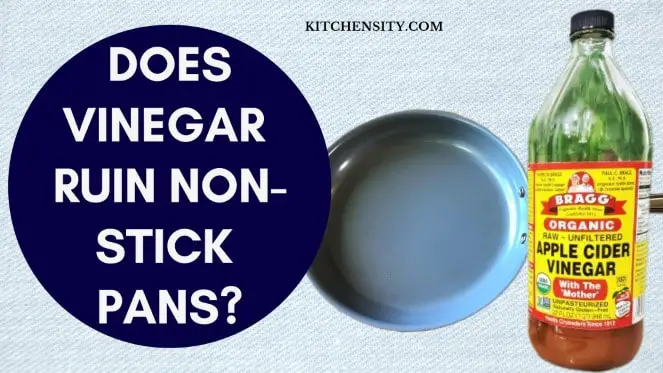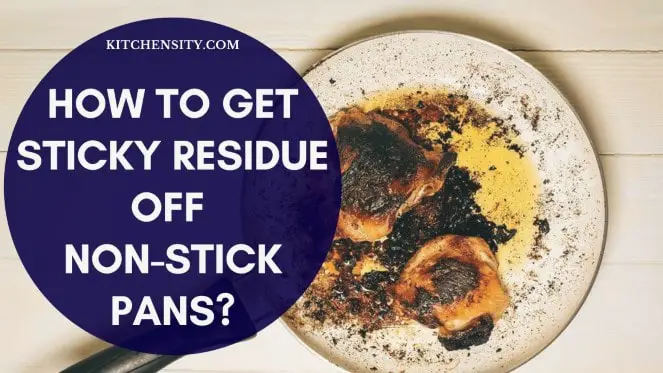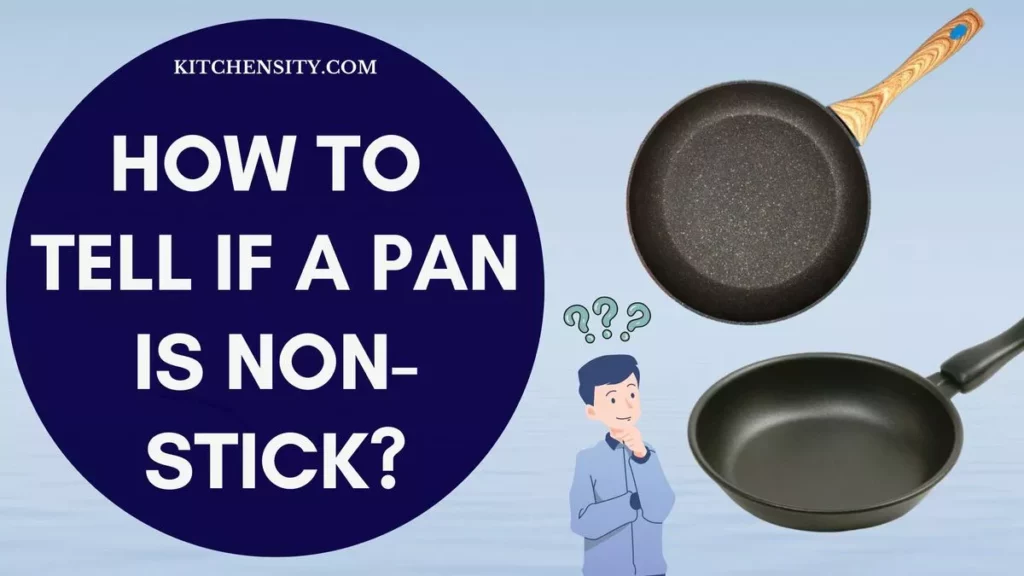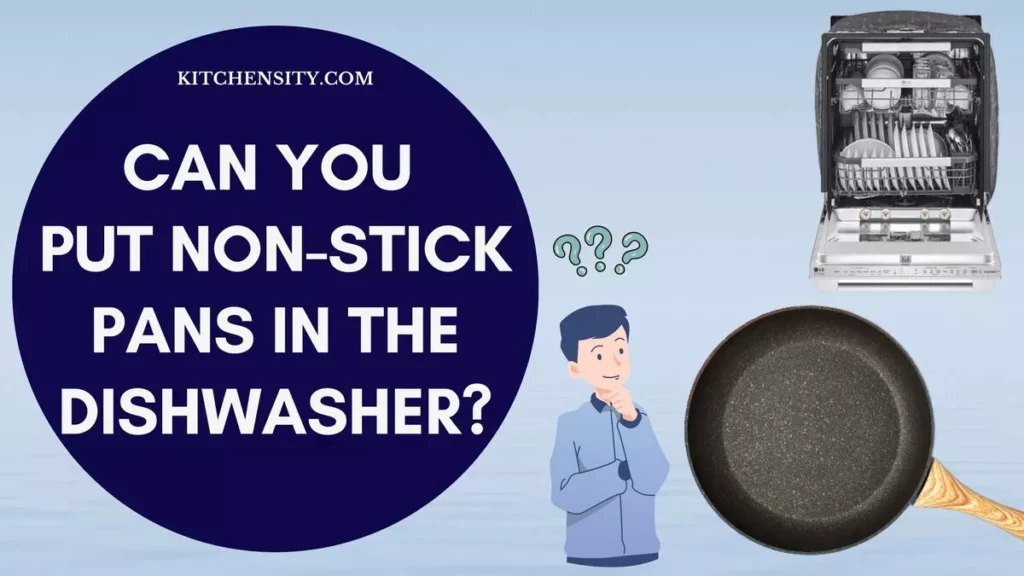Non-stick cookware has revolutionized how we cook, making it easier to prepare delicate foods without sticking and reducing the need for excessive oils or fats. However, like any kitchen tool, non-stick surfaces can encounter issues over time. This article aims to provide practical solutions for troubleshooting common issues that arise with non-stick surfaces, empowering readers to maintain their cookware effectively and prolong its lifespan.
Whether it’s dealing with sticking, peeling, or discoloration, understanding the causes and how to address these issues can help users make the most of their non-stick cookware.
Table of Contents
- 1 What Are The Common Issues With Non-Stick Surfaces?
- 2 Causes Of Common Issues With Non-Stick Surfaces
- 3 Troubleshooting Solutions For Common Non-Stick Surface Issues
- 3.1 How To Solve When Food Sticks To The Non-Stick Surface?
- 3.2 What To Do When The Non-Stick Coating Is Peeling?
- 3.3 How To Address Discoloration On The Non-Stick Surface?
- 3.4 What Should You Do If The Non-Stick Surface Gets Scratched?
- 3.5 How To Prevent Warping Of Non-Stick Pans?
- 3.6 How To Maintain Non-Stick Cookware?
- 4 How To Prevent These Issues With Non-Stick Surfaces?
- 5 When To Replace Non-Stick Cookware?
- 6 Why Do Non-Stick Pans Stop Working?
- 7 Final Thoughts: Troubleshoot Common Issues With Non-Stick Surfaces
- 8 Frequently Asked Questions (FAQs)
What Are The Common Issues With Non-Stick Surfaces?
The common issues with non-stick surfaces include sticking, peeling, discoloration, scratching, and wraping. These issues can affect the performance and appearance of the cookware, requiring troubleshooting and maintenance to address them effectively.
- Sticking: One of the most prevalent issues with non-stick surfaces is food sticking to the pan. This can occur due to overheating, using the wrong type of cooking oil, or not properly seasoning the pan.
- Peeling: The non-stick coating can start to peel over time, leading to a less effective non-stick surface. This can happen due to using metal utensils that scratch the coating, exposing it to high temperatures, or using abrasive cleaning tools.
- Discoloration: Non-stick surfaces can develop discoloration, which may be caused by overheating, using cooking sprays that leave residues, or using harsh cleaning agents that degrade the coating.
- Scratching: The surface of non-stick cookware can get scratched, reducing its non-stick properties. This can happen when using metal utensils or abrasive cleaning tools.
- Warping: Non-stick pans may warp over time, especially when exposed to rapid temperature changes or extreme heat.
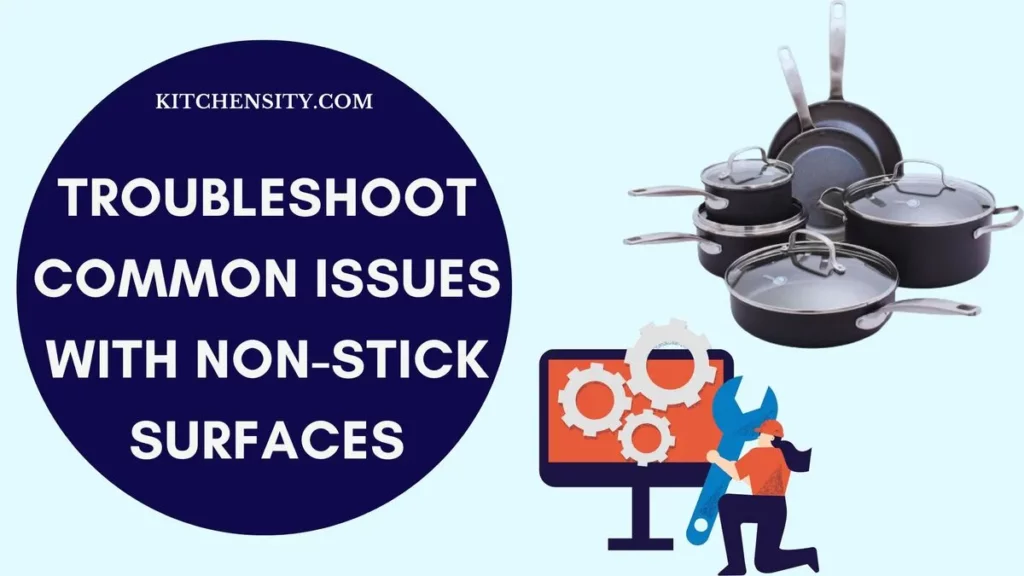
Also Read – Best Non-Stick Cookware Brands
Causes Of Common Issues With Non-Stick Surfaces
The common issues with non-stick surfaces, such as sticking, peeling, and discoloration, can be caused by factors such as improper use, exposure to high heat, and the quality of the coating. These issues may arise when users use metal utensils that scratch the surface, subject the cookware to excessive temperatures, or clean it with abrasive materials. Also, low-quality coatings or the use of the wrong cooking techniques can contribute to these problems.
Some of the causes are:
- Improper Use: Using metal utensils, abrasive cleaning tools, or harsh cleaning agents can scratch or damage the non-stick coating, leading to issues like sticking and peeling. Proper care and maintenance, including using appropriate utensils and cleaning methods, can help prevent these problems.
- High Heat: Non-stick coatings can degrade when exposed to high temperatures, affecting their non-stick properties and causing issues like sticking and discoloration. Avoiding overheating and using the cookware within its recommended temperature range can help mitigate this issue.
- Low-Quality Coatings: Non-stick cookware with inferior coatings may be more susceptible to wear and tear, leading to premature issues like sticking and peeling. Investing in high-quality cookware with durable coatings can reduce the risk of these problems.
- Abrasive Cleaning Methods: Cleaning non-stick surfaces with abrasive materials or harsh chemicals can damage the coating, compromising its non-stick properties. Gentle cleaning with non-abrasive materials is essential for preserving the integrity of the coating.
- Cooking Techniques: Certain cooking techniques, such as using the wrong type of oil or not properly seasoning the pan, can contribute to issues like sticking. Following recommended cooking practices and using suitable oils can help maintain the non-stick properties of the cookware.
Also Read – Non-Stick Cookware And Sustainable Living
Troubleshooting Solutions For Common Non-Stick Surface Issues
From addressing sticking and peeling to preventing discoloration and warping, here are some detailed solutions to tackle common problems and keep your non-stick cookware in top condition.
How To Solve When Food Sticks To The Non-Stick Surface?
When food sticks to the non-stick surface of your cookware, there are several steps you can take to address the issue:
- Adjust Your Cooking Methods: Use a lower heat setting and allow the pan to preheat before adding food. This can help prevent food from sticking to the surface.
- Use Oil or Butter: Adding a small amount of oil or butter to the pan can create a barrier between the food and the surface, reducing the likelihood of sticking.
- Season the Pan: Seasoning the pan with oil can improve its non-stick properties over time. To do this, coat the interior of the pan with a thin layer of oil and heat it in the oven for a short period.
What To Do When The Non-Stick Coating Is Peeling?
When the non-stick coating on your cookware starts to peel, it’s important to take action to prevent further deterioration and maintain food safety. Here’s what you can do:
- Inspect the Cookware: Examine the extent of the peeling to determine if it’s localized or widespread. If it’s widespread and affecting a large area, it may be time to replace the cookware.
- Consider Replacement: If the peeling is significant or affects a large portion of the cooking surface, it’s best to replace the cookware. Continued use of peeling cookware can lead to ingestion of the coating, which can be harmful.
- Choose Durable Alternatives: When replacing your cookware, consider options with more durable coatings or alternative materials like ceramic, which are less prone to peeling and offer long-term performance.
How To Address Discoloration On The Non-Stick Surface?
To address discoloration on the non-stick surface of your cookware, you can follow these steps:
- Gentle Cleaning: Use a mild dish soap and a soft sponge or cloth to gently clean the surface. Avoid using abrasive cleaners or scrubbers, as these can further damage the coating.
- Use Baking Soda: For stubborn stains or discoloration, create a paste using baking soda and water. Apply the paste to the affected area and gently scrub with a soft sponge or cloth. Rinse thoroughly with water afterward.
- Vinegar Solution: A solution of equal parts water and white vinegar can also help remove discoloration. Apply the solution to the affected area and let it sit for a few minutes before wiping it clean with a damp cloth.
- Avoid Harsh Chemicals: Avoid using harsh chemicals or abrasive cleaners, as these can damage the non-stick coating and worsen the discoloration.
- Preventive Measures: To prevent future discoloration, avoid overheating the cookware, and use gentle cleaning methods. Proper care and maintenance can help preserve the appearance and performance of your non-stick surfaces.
What Should You Do If The Non-Stick Surface Gets Scratched?
If the non-stick surface of your cookware gets scratched, consider the following steps to address the issue:
- Assess the Damage: Evaluate the extent of the scratches. Minor surface scratches may not affect the performance significantly, while deeper scratches can compromise the non-stick properties.
- Continue Using with Caution: If the scratches are minor and do not affect the cooking surface, you can continue using the cookware with caution. However, avoid using metal utensils or abrasive cleaning tools that can further damage the surface.
- Consider Replacement: If the scratches are deep or extensive, it may be time to replace the cookware. Deep scratches can lead to flaking or peeling of the non-stick coating, which can be hazardous if ingested.
- Use Gentle Cleaning Methods: When cleaning scratched non-stick surfaces, use gentle cleaning methods with mild dish soap and a soft sponge or cloth. Avoid abrasive cleaners or scrubbers that can worsen the scratches.
- Prevent Further Damage: To prevent further damage, be mindful of the utensils you use and avoid harsh cleaning practices. Wooden or silicone utensils are gentler on non-stick surfaces than metal ones.
How To Prevent Warping Of Non-Stick Pans?
To prevent the warping of non-stick pans, follow these tips:
- Avoid Rapid Temperature Changes: Non-stick pans can warp when exposed to rapid temperature changes. To prevent this, avoid placing a hot pan directly under cold water or placing it on a cold surface immediately after cooking.
- Use the Right Cooktop: Non-stick pans are designed for use on low to medium heat. Avoid using them in high heat settings, which can cause the pan to warp.
- Avoid High Heat in the Oven: If your non-stick pan is oven-safe, be mindful of the temperature settings. Avoid using it at very high temperatures, as this can lead to warping.
- Proper Storage: Store your non-stick pans properly to prevent warping. Avoid stacking heavy items on top of them, as this can cause deformation over time.
- Choose Quality Cookware: Invest in high-quality non-stick pans with sturdy construction. Quality pans are less likely to warp compared to cheaper, less durable options.
How To Maintain Non-Stick Cookware?
To maintain non-stick cookware effectively, follow these maintenance tips:
- Gentle Cleaning: Use mild dish soap and a soft sponge or cloth to clean non-stick surfaces. Avoid abrasive cleaners or scrubbers that can damage the coating.
- Avoid High Heat: Non-stick coatings can degrade when exposed to high heat. Use low to medium heat settings when cooking with non-stick cookware.
- Use Gentle Utensils: Use wooden, silicone, or plastic utensils instead of metal ones to avoid scratching the non-stick coating.
- Proper Storage: Store non-stick cookware carefully to prevent damage. Avoid stacking heavy items on top of non-stick pans.
- Regular Inspection: Periodically inspect your non-stick cookware for signs of wear and tear, such as peeling or scratching. Replace damaged cookware promptly.
- Avoid Cooking Sprays: Cooking sprays can leave residues that build up on non-stick surfaces, leading to sticking. Use a small amount of oil or butter when needed instead.
Also Read – Types Of Non-Stick Coatings
How To Prevent These Issues With Non-Stick Surfaces?
To prevent issues with non-stick surfaces, use gentle utensils, cook at moderate temperatures, clean with mild soap and a soft sponge, avoid cooking sprays, season the pan when needed, and follow the manufacturer’s instructions. These practices can help maintain the non-stick properties and extend the lifespan of your cookware.
Consider the following tips:
- Use Gentle Utensils: Avoid using metal utensils that can scratch the non-stick coating. Opt for silicone, wood, or plastic utensils instead.
- Cook at Moderate Temperatures: Avoid overheating non-stick pans, as high temperatures can degrade the coating. Use low to medium heat settings when cooking.
- Proper Cleaning: Clean non-stick surfaces gently with mild dish soap and a soft sponge. Avoid abrasive cleaners or scouring pads that can damage the coating.
- Avoid Cooking Sprays: Cooking sprays can leave residues that can build up on the surface and cause sticking. Instead, use a small amount of oil or butter when necessary.
- Season the Pan: Some non-stick surfaces benefit from occasional seasoning with oil to maintain their non-stick properties.
Also Read – Environmental Impact Of Non-Stick Cookware
When To Replace Non-Stick Cookware?
Knowing when to replace non-stick cookware is essential for maintaining a safe and effective kitchen. Look for these signs that indicate it’s time for a new set:
- Visible Wear and Tear: If you notice significant scratches, peeling, or flaking on the non-stick coating, it’s time to replace the cookware. Damaged coatings can affect food safety and cooking performance.
- Loss of Non-Stick Properties: When the non-stick properties of the cookware diminish, and food begins to stick more often, it may be time for a replacement. Over time, the coating can wear off, leading to reduced effectiveness.
- Warped or Damaged Pans: Warped or damaged pans can affect cooking results and pose safety risks. If your non-stick pans are no longer flat or have structural damage, consider replacing them.
- Safety Concerns: If the non-stick coating shows signs of degradation, such as chipping or flaking, it can pose health risks if ingested. Replace cookware with compromised coatings to ensure food safety.
Considerations for Choosing a New Set:
- Quality Materials: Look for non-stick cookware made from durable materials with high-quality coatings. Consider options with reinforced coatings for improved longevity.
- Heat Resistance: Choose cookware that can withstand the temperatures you typically use in your cooking. Ensure it is compatible with your cooktop and oven.
- Size and Use: Consider your cooking needs and choose a set that includes the sizes and types of pans you use most frequently. Look for versatility and functionality.
- Maintenance: Opt for cookware that is easy to clean and maintain. Dishwasher-safe options can make cleaning more convenient.
Also Read – Do Chefs Use Non-Stick Cookware?
Why Do Non-Stick Pans Stop Working?
Non-stick pans can stop working due to wear and tear of the non-stick coating, damage from scratches or chips, exposure to high heat, improper use with metal utensils or on high heat settings, and the quality of the coating itself.
- Wear and Tear: Over time, the non-stick coating on pans can wear down, especially with frequent use and cleaning. This wear can lead to a loss of non-stick properties, causing food to stick to the surface.
- Damage: Scratches or chips in the non-stick coating can compromise its effectiveness. Using metal utensils or abrasive cleaning tools can cause damage to the coating, reducing its non-stick capabilities.
- High Heat: Exposing non-stick pans to high temperatures can cause the coating to break down and lose its non-stick properties. Overheating can lead to the formation of hot spots that affect the surface’s performance.
- Improper Use: Using non-stick pans in high heat settings or with metal utensils can accelerate wear and tear, leading to a shorter lifespan for the non-stick coating.
- Quality of the Coating: Lower-quality non-stick coatings may deteriorate more quickly than higher-quality ones, impacting their longevity and performance.
Also Read – What Recipes Work Best With Non-Stick Pans?
Final Thoughts: Troubleshoot Common Issues With Non-Stick Surfaces
In conclusion, maintaining non-stick cookware involves careful use, regular inspection, and prompt action when issues arise. By following the troubleshooting tips provided earlier, such as adjusting cooking methods to prevent sticking, addressing peeling coatings promptly, and using gentle cleaning methods, you can prolong the life of your non-stick surfaces.
Remember to assess the condition of your cookware regularly and replace it if you notice significant wear and tear or loss of non-stick properties. Choosing high-quality replacements and proper maintenance will ensure that your non-stick cookware continues to serve you well in the kitchen.
Also Read – How To Care For Non-Stick Pans When Used Outdoors?
Frequently Asked Questions (FAQs)
-
Why Is Food Sticking To My Non-Stick Pan?
Food may stick due to overheating the pan, using metal utensils that damage the coating, or if the non-stick surface is worn out from extended use.
-
How Can I Prevent My Non-Stick Coating From Peeling?
Avoid using abrasive cleaners or harsh scrubbers that can damage the coating, and opt for gentle cleaning with mild soap and a soft sponge. Also, refrain from using metal utensils that can scratch the coating and cause peeling.
-
What Should I Do If My Non-Stick Pan Is Discolored?
Try cleaning with a gentle abrasive like baking soda or a vinegar solution to remove surface discoloration. Avoid using harsh chemicals that can further damage the non-stick coating.
-
Can I Still Use A Non-Stick Pan With Minor Scratches?
Minor scratches may not significantly impact performance, but avoid using the pan if the scratches are deep or extensive, as they can compromise the non-stick properties and safety of the cookware.
-
When Is It Time To Replace My Non-Stick Cookware?
Consider replacing it if the non-stick coating is visibly damaged, such as peeling or flaking, or if the non-stick properties have significantly diminished, leading to food sticking more often. Safety concerns should also prompt replacement.
Katrina Smith is a seasoned expert with over 25 years of experience in all things related to cooking and the kitchen. As an avid cook and kitchen enthusiast, she is passionate about sharing her knowledge and expertise on cookware, kitchen appliances, kitchen tips, and kitchen staples.
Through her articles and reviews, Katrina aims to inspire and help others improve their cooking skills, experiment with different ingredients, and invest in quality cookware and appliances.


